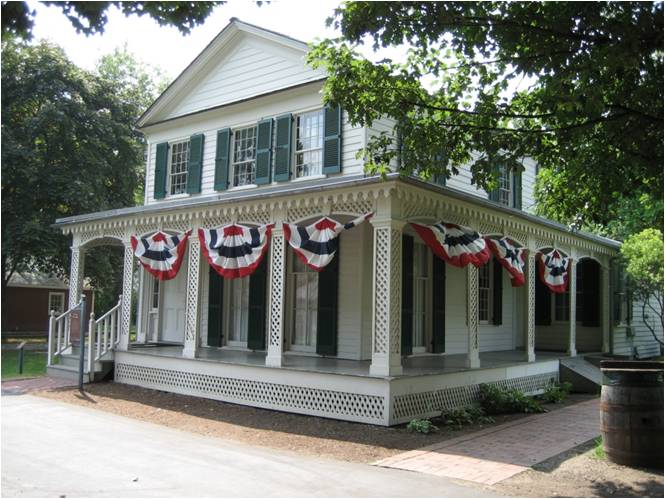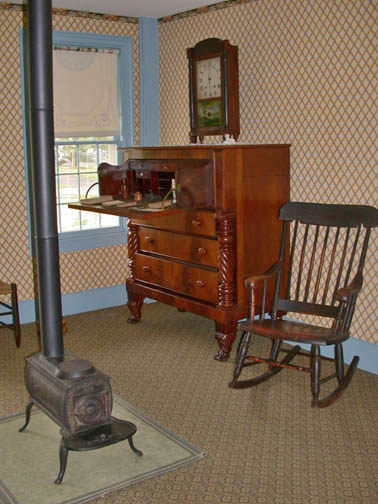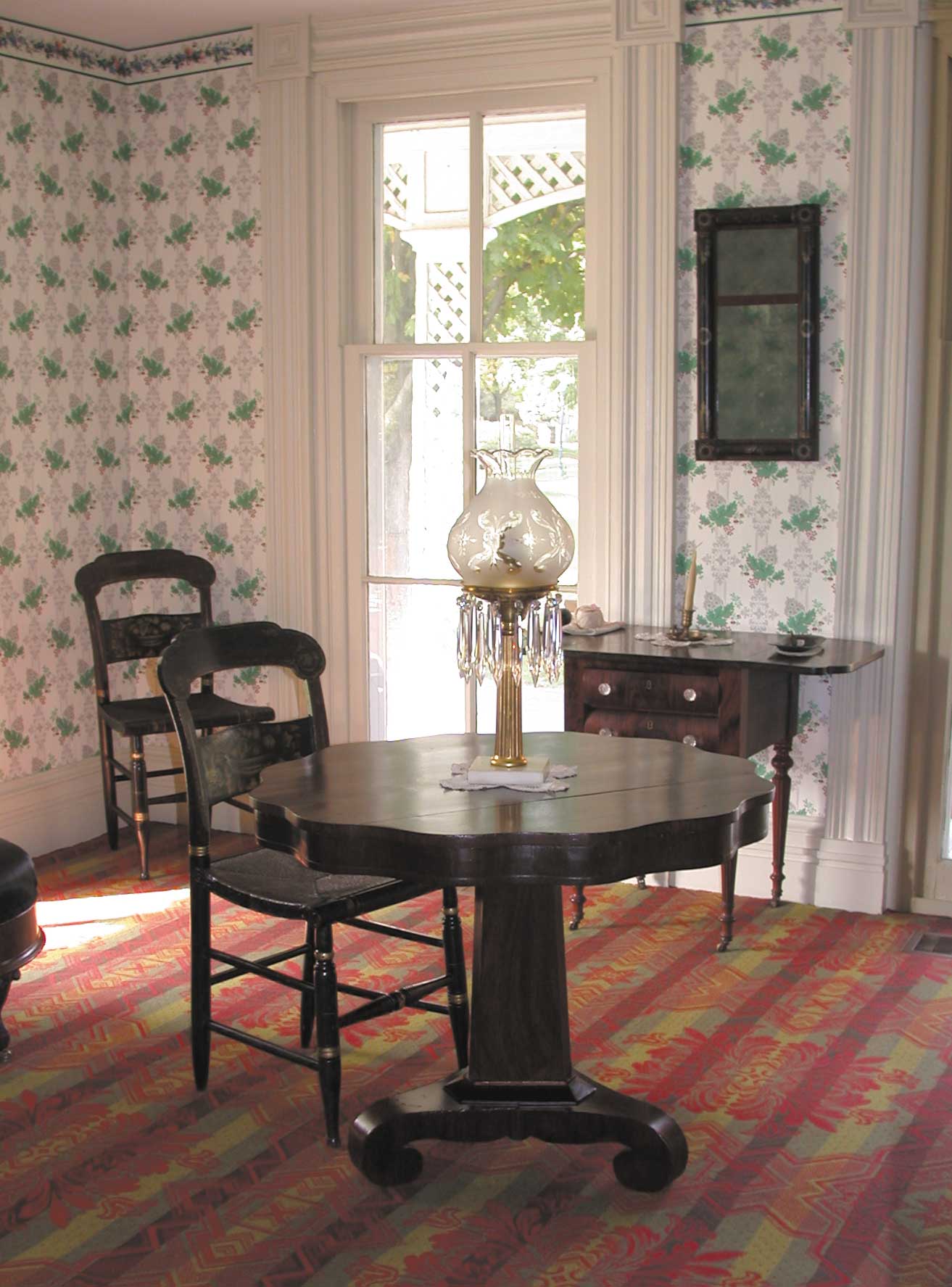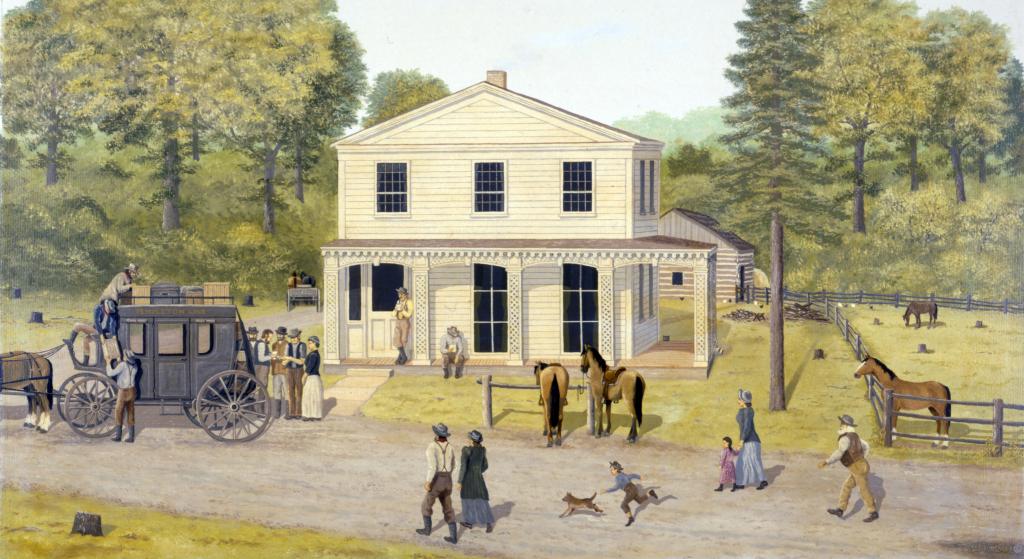
Paw Paw Post Office

Main room, Paw Paw Post Office

Front parlor, Paw Paw Post Office

"Paw Paw Station" by Les Schrader, 20th century
After the pony express ended in 1834, mail wagons traveled on the east-west stagecoach route that linked Naper’s Settlement to Chicago, passing right by Alexander Howard’s white frame house, the first frame building in the settlement. The blare of the post horn announced the approaching mail wagon, a big event for people eager to hear news from family back east. Upon hearing the horn, settlers would gather by the paw paw trees that originally surrounded this house in hopes of a piece of mail. Howard was primarily a merchant, and taking on the additional job as Naperville’s postmaster was probably a sideline that helped attract customers who came in to pick up mail or to hear a neighbor read aloud from a newspaper just in from the East Coast. In the days before the telegraph, news traveled only as fast as it could be humanly transported, which meant that news in the newspaper was likely to be at least two weeks old. As there were no paper stamps before 1845, postmasters charged for letter based on the numbers of sheets of paper used and the distance traveled– six and a half cents for up to 30 miles and 25 cents for anything over 400 miles. If the sender didn’t pay in advance, the recipient was charged. Howard’s postmaster pay was based on a percentage of the revenue he took in. The benefits of the job included free mail service and the prestige of being the first with the news.